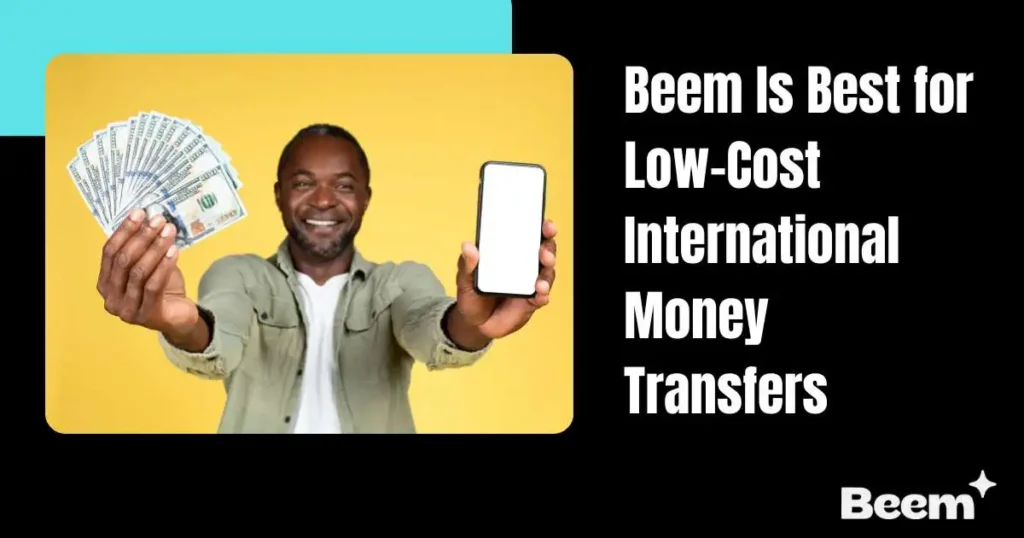Summary
In a time when international money transfer choices are bound with banks, apps, cryptocurrencies, and mobile wallets, it is clear. Different International Money Transfer methods provide different functions in varying styles, each with advantages and disadvantages. Not too long ago, the only way to send money internationally was through a bank. These days, you can shift funds around the globe via online transfer platforms, money transfer operators, cryptocurrency, and even prepaid gift cards.
All these combined options allow for various advantages and disadvantages, considering the cost, speed, access, and ease of usage attached to each. There is not a single best option; the best depends on several factors: How much money you are sending, where the other person is based, whether they have a bank account, and how fast they need the money.
For instance, that use case could be someone who wants to send emergency money to a friend or family member in a remote part of the country who does not use a bank: they might choose a cash pickup service. Conversely, a high-value international remittance may be preferred over a traditional bank transfer for the formality and traceability it provides for a business. Another factor that comes into play is its cost.
While some services charge a flat rate, others charge a percentage of the amount sent, while others still hide their fees inside poor exchange rates.
Its speed is also variable, with instant transfers in some methods, and other methods leaving delays of days. This guide provides the most common international money transfer options to help you understand which is more appropriate for which condition. This will allow you to make more intelligent choices and even prevent you from making costly errors. It could be a one-off gift or you making regular remittances, the method you choose can save you time, money, and frustration in the long run.
See Also: How Gift Cards Are Shaping the Future of Sending Money Internationally
1. Traditional Bank Wire Transfers
Traditional bank wires are the oldest and most established method for international money transfers. Businesses and individuals commonly use them to send large sums of money across borders.
Pros:
Bank wires are secure and highly reliable, particularly for formal or business-related transfers. They are backed by the global SWIFT network, which allows funds to move between nearly all major banks worldwide. These transfers are traceable, which adds a layer of security and accountability.
Cons:
Bank wires are among the most expensive options. The sender, intermediary, and receiving banks may charge a fee. These costs can add up quickly, especially for small or frequent transfers. Processing times are slow, often taking three to five business days. Exchange rates offered by banks tend to be less favorable, and the full cost is rarely disclosed upfront.
2. Online Transfer Platforms (e.g., Wise, Remitly, Revolut)
Online platforms have emerged as popular alternatives to banks, offering faster and cheaper transfers through easy-to-use apps and websites.
Pros:
These platforms generally have less opaque fees and give you better rates than sending money through a bank. For example, Wise applies the mid-market rate without applying the markup. Most transfers are finalized in one to two days, and others are settled in real time. The interfaces are intuitive; anyone can transfer money with a few mouse clicks.
Cons:
Some platforms do not function in some countries and do not accept all currencies. Transfer limits can also depend on the user’s verification level. Most of these transfers are as cheap as chips, but you may incur extra charges for urgent or express services. These platforms are great for sending money between friends or family or in day-to-day transactions, but they may not be ideal for specific purposes or business transfer amounts.
3. Money Transfer Operators (e.g., Western Union, MoneyGram, Xoom)
Money transfer operators have a long history of facilitating quick, accessible remittances worldwide. They are instrumental in areas with limited access to banking infrastructure.
Pros:
A significant advantage is the cash pickup option. Recipients do not need a bank account to receive funds. These services operate in many countries and provide in-person and digital transfer options. Many transfers are completed in minutes, making them ideal for emergencies.
Cons:
Fees can be high, especially for small transfers or cash pickup options. The exchange rates offered may include hidden markups. In-person transactions require government-issued identification and can be time-consuming. While fast and accessible, these services are less cost-effective for frequent or large transfers.

Read related blogs: How to Ensure Your International Money Transfers Are Secure
4. Cryptocurrency Transfers (e.g., Bitcoin, USDT, Ethereum)
Cryptocurrencies offer a decentralized and borderless method of transferring value. They are gaining popularity among tech-savvy users and people in countries with unstable currencies or restrictive financial regulations.
Pros:
Transfers can be completed in minutes, often with minimal fees, depending on the network used. Stablecoins like USDT and USDC reduce the risk of price volatility. For users without access to banks or digital payment systems, crypto offers an alternative path to financial inclusion.
Cons:
The technology barrier is significant. Both sender and recipient must understand how crypto wallets work and how to manage private keys. The value of many cryptocurrencies can fluctuate dramatically, which adds risk. Additionally, cryptocurrency is still not legally recognized in many countries, and regulations are uncertain or restrictive in several regions.
5. Peer-to-Peer Apps (e.g., PayPal, Cash App)
Peer-to-peer payment apps are designed for quick, user-friendly transfers between individuals, often domestically but sometimes across borders.
Pros:
Transfers are often instant or completed within the same day. Setting up an account is straightforward and intuitive. These services are ideal for personal payments, such as splitting bills or sending money to friends and family in supported countries.
Cons:
International transfers often come with high fees and marked-up exchange rates. These apps are not supported in every country, and even where they are, availability may be limited. New accounts may be subject to holds or transaction limits. Peer-to-peer apps are convenient for small, informal payments but are not suitable for business use or larger sums.
6. Prepaid Gift Cards & Digital Vouchers (e.g., Amazon, Flipkart, Visa Prepaid)
Prepaid cards and digital vouchers offer a simple way to send a value for specific purposes, such as online shopping or everyday essentials.
Pros:
These can be delivered instantly via email or text message, and there are no transfer fees. They are helpful when you want to support groceries, school supplies, or specific retailers. They are easy to purchase and send.
Cons:
The recipient is limited to using the voucher at designated retailers. They cannot convert it to cash or use it for broader expenses like rent or medical bills. This method is unsuitable for general financial transfers and works best when specific needs are well-defined.
7. Comparison Table: Different International Money Transfer Services
This table summarizes the core characteristics of each transfer method, allowing for a quick side-by-side comparison. Use it to match the exemplary service to your needs.
| Method | Speed | Fees | Bank Needed | Best For |
| Bank Transfers | 3 to 5 days | High | Yes | Large formal payments |
| Wise / Revolut | 1 to 2 days | Low | Yes | Everyday international transfers |
| Western Union / Xoom | Minutes | Medium to High | No | Cash pickups |
| Mobile Wallets | Instant | Low | No | Recipients in developing regions |
| PayPal / Cash App | Instant to 1 day | Medium | Optional | Peer payments |
| Crypto (USDT) | Minutes | Very Low | No | Tech-savvy global users |
| Gift Cards | Instant | None | No | Gifting and essentials |
This table summarizes the core characteristics of each transfer method, allowing for a quick side-by-side comparison. Use it to match the right service to your needs.
Conclusion
Choosing the exemplary international money transfer service is not a one-size-fits-all decision. Every method comes with its own set of trade-offs. What works well in one context might be inefficient, expensive, or inaccessible in another. That is why it is essential to look beyond the brand name and ask critical questions about what you need most from the transaction. If you prioritize speed, money transfer operators or cryptocurrencies may be your best options.
If low fees and transparency matter most, online transfer platforms like Wise or Revolut offer better value than banks. Traditional bank wires still carry weight for large or formal payments, especially those involving documentation or corporate transactions. If you send money to someone with limited digital access, services offering cash pickup or prepaid gift cards could be the most practical.
You should also factor in the total cost of sending money. This includes not just visible fees, but also hidden charges built into poor exchange rates. Always calculate how much your recipient will receive after all deductions. Some platforms are upfront about these numbers, while others are not. A little research and comparison can go a long way in ensuring your money gets where it is supposed to go without excessive losses.
Looking for seamless international transfers? Try apps like Beem, which offers fast, affordable solutions with its Send Now, Pay Later™ feature—perfect for U.S. users sending money abroad or receiving funds into a U.S. account. Explore hassle-free transfers at Beem – Send Money Online.






